 |
||
|
||
| ||
 The experience of market penetration by the previous generation - KYRO - says that the slogans are still slogans, and KYRO based cards neither from C.P.Technology (PowerColor), nor from Innovision Multimedia (Inno3D) have appeared on the market. Although the cards were announced and a small number of them was produced but it looks like a black thread on a white table-cloth. There may be several reasons: unwillingness to be blamed by NVIDIA, and a fear that such cards won't find its users, while no one manufacturer wants to sell them at low prices right away. Today a 32-MB card based on the KYRO costs some $50, which is less than a GeForce2 MX200, although in performance the KYRO performs much better than the GeForce2 MX200 (you can check it in our 3Digest). The theoretical issues on the tile architecture and the technological peculiarities of the KYRO and KYRO II are highlighted in the following articles: Video cards on the KYRO/KYRO II are constantly kept an eye on in our 3Digest, where you can look at the performance and quality of 3D graphics of these cards. Now let's come back to the KYRO / KYRO II based cards. If the KYRO was just a first attempt of the tandem of Imagination Technologies / STMicroelectronics, the KYRO II, having higher frequencies and advanced drivers, is a strong threat for the NVIDIA GeForce2 MX cards market. It even can successfully compete against the GeForce2 GTS. All these facts made the KYRO II more attractive than its predecessor, and such a powerful concern as Guillemot (Hercules) released the first product exactly on the KYRO II, and not on the KYRO. Hercules was the first company that promoted successfully this graphics processor, unlike other Asian companies. But not everything is so bad: a well known Korean company - SuperMicro Systems (SUMA) has decided upon manufacturing of such video cards. SUMA has also offered the first card based on the KYRO II, though its plans include production of models based on the KYRO as well. I think that appearance of the latter on the market depends on the success of the KYRO II based cards since they differ only in the speed. The software is the same, and the experience show that they have identical problems in games. KYRO / KYRO II cards can be recommended for a wide range of users due to a low cost and a perfect ratio of price/quality/speed, but there are still some flies in the ointment. First of all the cards are still unstable on some new platforms, in particular on AMD760 or i850. Of course, it can be debugged in any new version of drivers or of the BIOS. On the whole, as I have written in the Hercules 3D Prophet 4000XT review, the developers keep an eye on reviews and correct errors quite fast. Now let's turn to the SUMA Platinum K2 video card. CardThe SUMA Platinum K2 card has AGP x2/x4 interface, 32 MBytes SDR SDRAM located in 4 chips on the front side of the PCB. 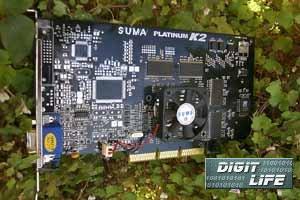 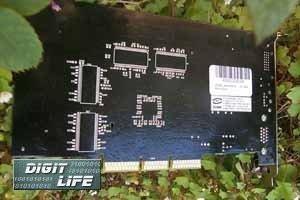 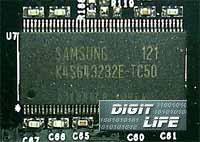 Samsung produces memory chips with a 5 ns access time, which corresponds to 200 MHz. But the memory works at 175 MHz, as well as the chip, because the frequencies of the processor and the memory are synchronized. That is why the memory has a good overclocking potential, but it is, unfortunately, limited by the chip's speed. The card follows the reference design from Imagination Technologies. The card is traditionally black. It provides the space for TV-out and DVI. The respective connectors (RCA, S-Video) are absent. The GPU is equipped with a small cooler with a typical platinum-like coating. 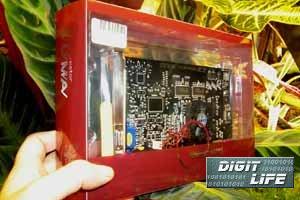 The card ships in a Retail-package which is a traditional plastic box, but its color differs from customary dark-blue. In the box you can find:
OverclockingThe SUMA Platinum K2 can be potentially overclocked, at 190/190 MHz the card doesn't hang, but there are some problems with operability of some caches. This brings in artifacts, for example, flicker of image, lags. The speed, in this case, lowers strongly. That is why overclocking is not rational. These drawbacks disappear only at 180/180 MHz. Installation and driversTest system configuration:
For testing we used drivers from STMicroelectronics of 7.01.11, VSync was off, the forced texture compression technology was used. For comparison, the results of the following cards are given: SUMA Platunum GeForce2 MX400 PowerUp (200/183 MHz), SIGMA Cyber6000 (GeForce2 GTS, 32 MBytes). Test resultsThe 2D quality is very good at resolutions up to 1600X1200X75 Hz. At lower resolutions (e.g. 1024X768X110Hz) it is just excellent! For estimation of 3D quality we used the id Software Quake3 v.1.17 - a game-test which demonstrates the card's operation in OpenGL with usage of a standard demo-benchmark demo002. Quake3 Arenademo002, the highest qualityThe tests were carried out in two modes: 16-bit color and 32-bit color at the highest quality. Here we will look at the card's operation with the S3TC enabled, and with a trilinear filtering enabled at the same time. 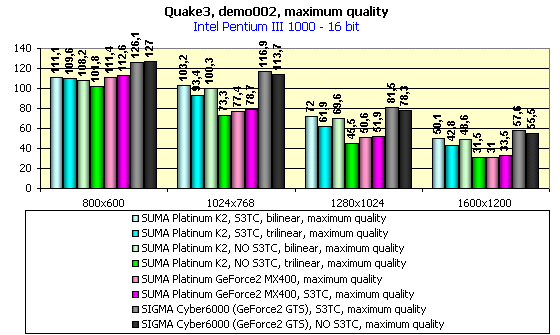 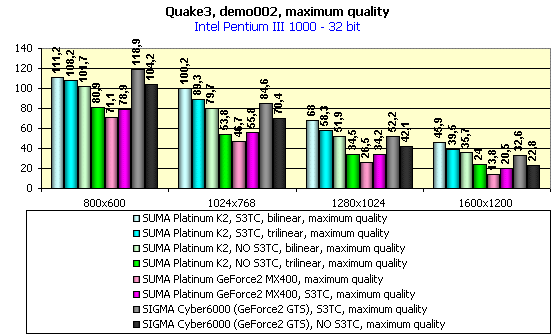 Look, what a considerable performance boost the KYRO II gains with the texture compression technology. The performance is now dozens of percents higher! And while in 16-bit color the SUMA Platunum K2 catches up with the powerful GeForce2 GTS only at 1600X1200, in 32-bit color it outscores the latter yet at 1024X768. The trilinear filtering activation is an only stumbling block. Look at the performance drop percentage-wise when the trilinear filtering is enabled: 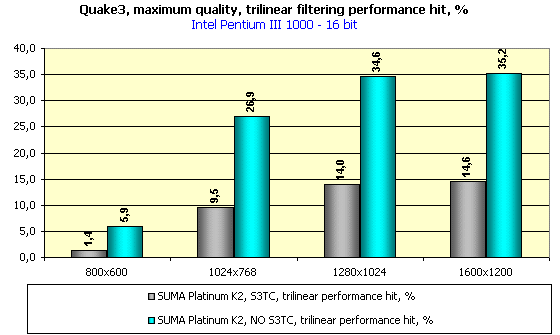 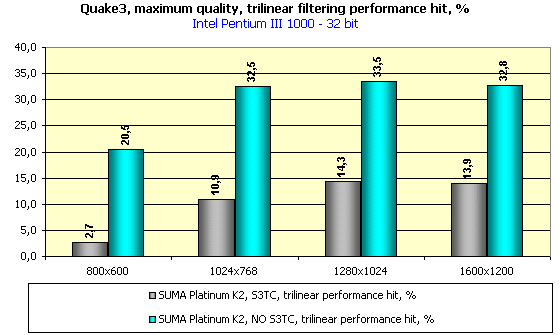 As you can see, without the S3TC the speed decrease is very significant, though with the texture compression it reduces. Let's look at the screenshots to clarify the reasons. Bilinear filtering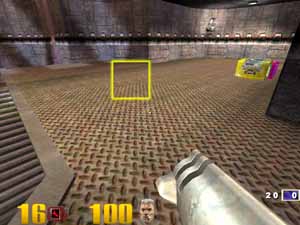 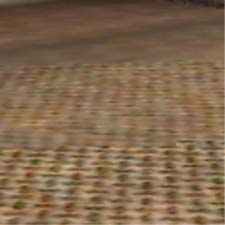 Trilinear filtering with the S3TC enabled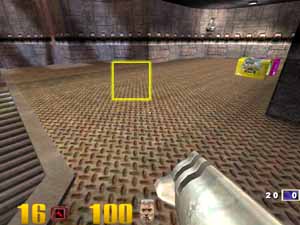 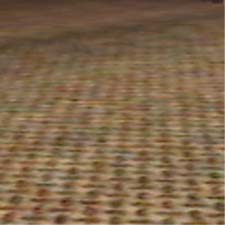 Trilinear filtering with the S3TC disabled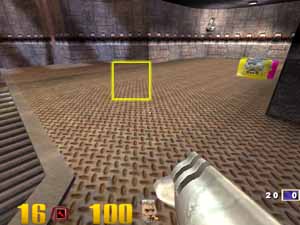 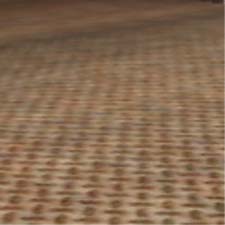 At first sight, the last two screenshots do not have any differences, but for the dynamics. If we activate the trilinear filtering together with the texture compression, the borders of the MIP levels are anyway noticeable, though not so vivid. Now let's color the MIP levels with the help of the variable r_colorMIPLevels 1 : Bilinear filtering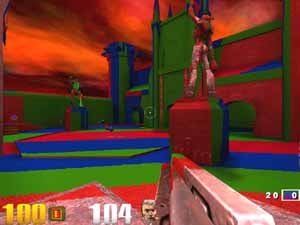 Trilinear filtering with the S3TC enabled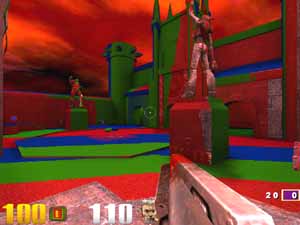 Trilinear filtering with the S3TC disabled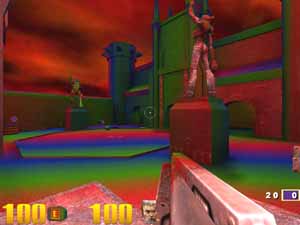 Coloring of the levels shows that a real trilinear filtering is absent with the texture compression enabled! It is approximation, i.e. replacement of a real trilinear filtering with a simpler algorithm which dithers borders between MIP level at less expenses, but implements it rougher. So, it is clear that the developers aim to lift the performance at the expense of quality. Is it good or bad? I see that all latest cards must have some trade-off solutions in order to realize or improve some functions at the expense of the performance. Maybe it is only the NVIDIA GeForce3 which doesn't depend to such a great extent on such compromises. But the graphics quality is very high with the S3TC enabled, as well as the quality of the trilinear approximation, than that of NVIDIA Riva TNT/TNT2 cards. But on the other hand, we mustn't always chase the speed, thus allowing for poor quality of the graphics. You may already notice that today anisotropic filtering in the OpenGL settings and in the drivers is just a fiction. It exists only in the Serious Sam game which can enable the anisotropy itself. This function was available in the beginning, however. But all our readers of the reviews on KYRO / KYRO II know quite well what was the charge for activation of anisotropy filtering. This performance drop is much more considerable than when the trilinear filtering is enabled. That is why let's wait for the developers to find new good solutions and debug the software (there are still games with visual imperfections, for example, in the RealMYST game textures bounce, shadows appear and disappear from time to time). ConclusionTaking into account the price of the SUMA Platinum K2, which is much less than that of NVIDIA GeForce2 GTS cards, we can see that this card is beneficial. Some GeForce2 MX400 from famous companies cost even more. Usage of the S3TC technology is always possible but it is not always justified, because in some games this can bring problems, for example in those which are based on the Unreal Tournament engine. That is why the texture compression should be used only if necessary. But in the majority of modern games no problems must occur. The KYRO II recognizes all types of relief texturing, and this makes it advantageous. Since the software constantly updates, we can recommend such cards only those who have an Internet access to download new drivers. In the June 3Digest you can find a full comparison of characteristics of cards of this and other classes. Highs:
Lows:
Write a comment below. No registration needed!
|
Platform · Video · Multimedia · Mobile · Other || About us & Privacy policy · Twitter · Facebook Copyright © Byrds Research & Publishing, Ltd., 1997–2011. All rights reserved. |